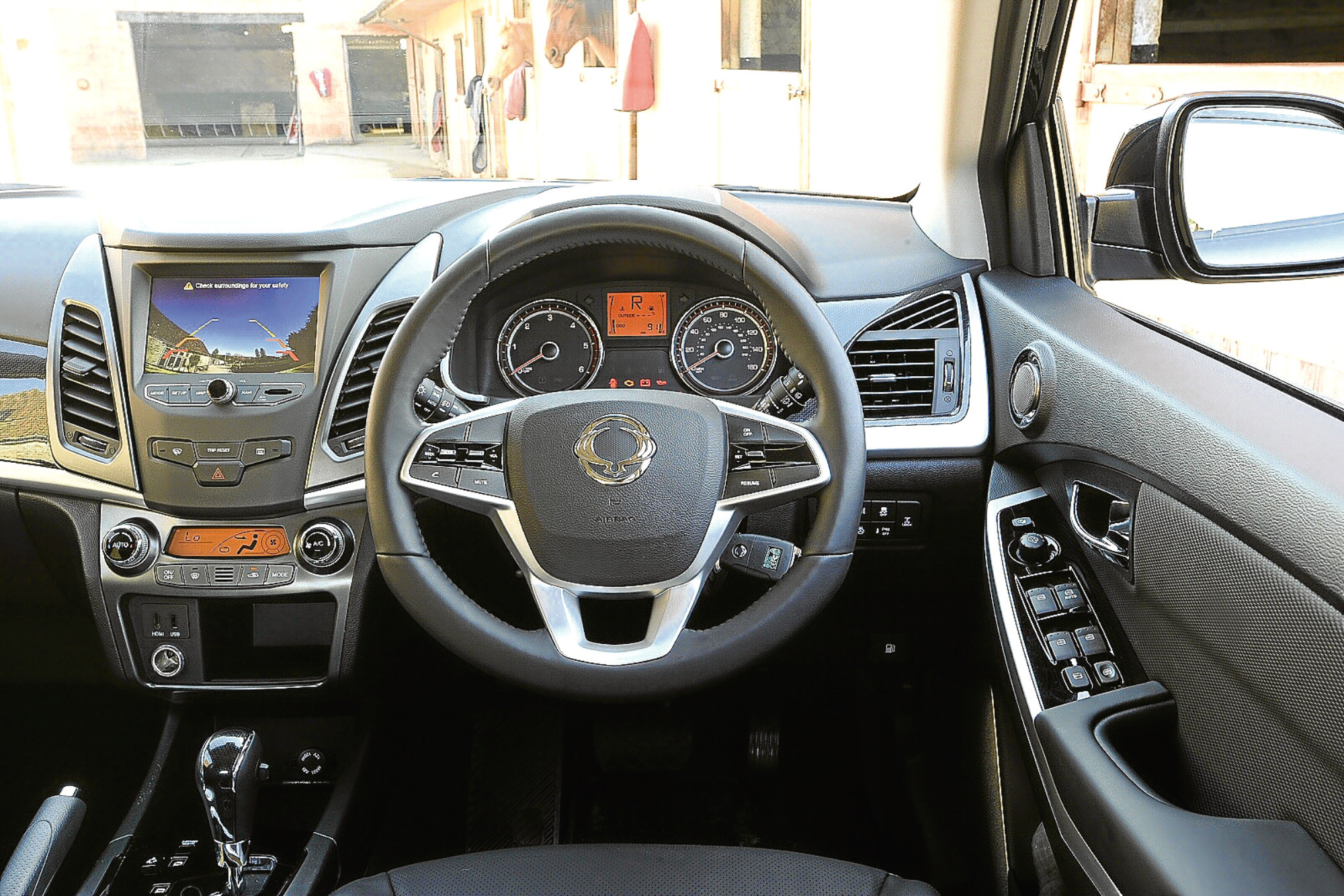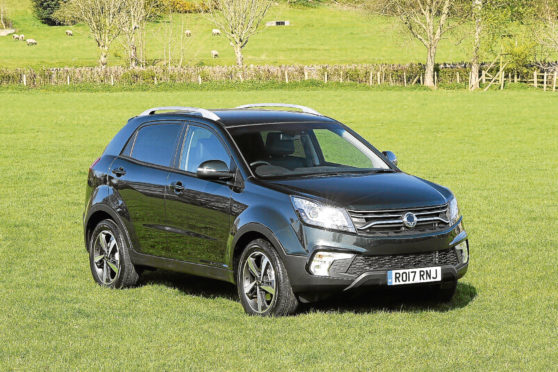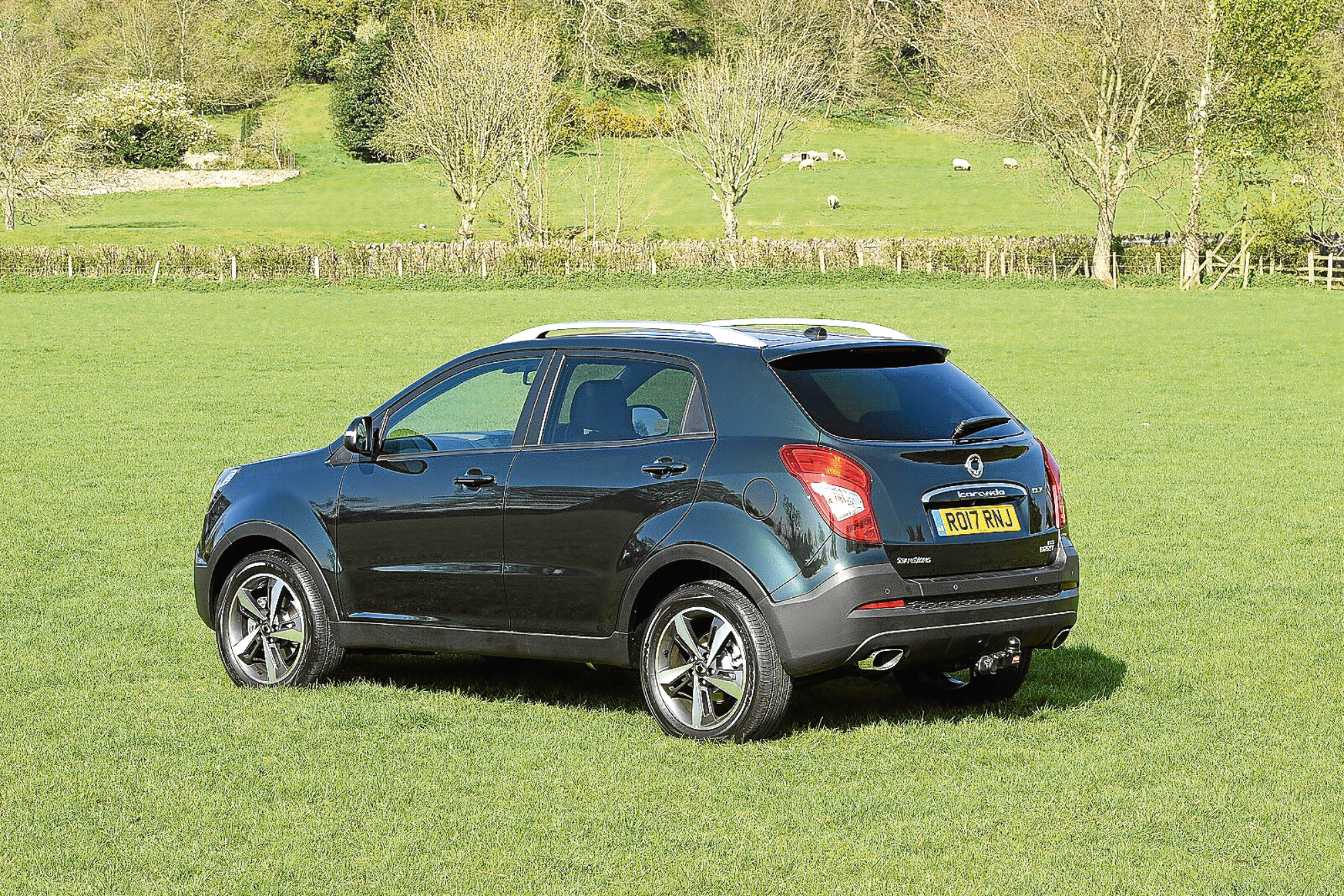The SsangYong Korando has always been an affordable option for those looking for a compact SUV or crossover, but it’s always lagged a little behind obvious rivals in terms of technology.
In recent times though, the Korean brand has been making up ground and this latest model has the option of features such as front and rear safety cameras and a centre-dash infotainment display with a smartphone mirroring function.
To draw the attention of buyers to these embellishments, there’s now a smarter front end look too.
Plus the 2.2-litre diesel engine beneath the bonnet is as capable as ever.

SsangYong has been making models badged Korando since 1954, but despite that, we’re looking here at a car with a badge and a design that still has little recognition across the market segment in which it must compete – that for Qashqai-like crossover models and the soft-roading lifestyle-orientated small SUVs that are just like them.
We’re talking about the budget end of this sector of course – cars like Kia’s Sportage and Hyundai’s Tucson rather than Toyota RAV4s or Honda CRVs. And five-seat only models, since that’s what this is.
It’s a part of the market you’d think even an unknown manufacturer might enjoy some success if it was able to offer a good looking car with more power, greater interior space and higher equipment levels than its rivals at a more affordable price.
The Korando offered all that at its original introduction in 2011 and the proposition was further improved with the launch of a facelifted version in 2014, further enhanced a year later with the addition of a cleaner, much quieter Euro6 2.2-litre engine.
Now SsangYong has tinkered with this car once again, introducing extra tech and an even smarter look.
Will it be enough to launch this car into greater class contention? Let’s find out.
If you haven’t tried a Korando in the past few years but quite like the look of one, it might be time to give this Korean contender another chance, for since the introduction of the current e-XDi220 2.2-litre diesel engine, it’s become much more class competitive, both in terms of power and efficiency.
There’s a 175bhp output and a lusty 295lb/ft torque figure that makes this car an accomplished tower.
On the move, maximum pulling power is delivered from as low as 1,400rpm and maintained through a wide range up to 2,800rpm for smooth, progressive driving.
At the top of the range, this unit can come mated to a freshly developed six-speed Aisin automatic gearbox.
There’s the option of two-wheel drive on the mainstream SE and EX trim levels but customers wanting to exercise this model’s impressive two-tonne towing capability will want a variant featuring SsangYong’s on-demand four-wheel-drive system.
There’s a manually operated differential lock if you find yourself in a really sticky situation, allowing a higher percentage of torque to be sent to the rear wheels at low speeds.
Ground clearance isn’t too bad and front and rear overhangs are both tight, lending this Korando more than a modicum of off-road ability.
On road, it’s a fairly tidy handler, with acceptable body control and strong brakes.
The steering takes a bit of getting used to, with a rather light feel about the straight ahead before weighting up sharply off centre.
The ride quality is fine on the 17in wheels although it will become a bit more brittle on the 18-inch alloys.
Visual changes to this improved Korando model include revised daytime running lights using 11 high-luminescent LED lamps with separate lenses to improve visibility, plus smarter 18-inch diamond-cut wheels.
Otherwise, things are much as before.
The Korando doesn’t stand out in a crowd of compact SUVs and perhaps that’s a good thing.
Cover the badge on the front, and most people would probably think it was the latest Suzuki Vitara or Toyota RAV4.
Given the fact that the Korando undercuts these cars quite markedly, perhaps that’s no bad thing.
Inside, there’s a redesigned steering wheel and an infotainment system that features a seven-inch hi-res colour touchscreen on most models with audio streaming from smart devices, plus on top models, there’s a link to front and rear parking cameras. The dashboard features soft-touch materials and natural matt wood grain inserts. Plus there are large cupholders and space to store mobile phones and sunglasses.
As before, there are still a few scratchy plastics here and there but it all looks agreeably modern and it’s hard to fault the basic ergonomics, something that all too often gets forgotten in the chase for ever flashier control systems.
There’s still loads of space on board too, with plenty of rear legroom and fold flat rear seats.
The 486-litre luggage bay offers a respectable capacity for a car of this size and extends to 1,312 litres when the rear bench is folded.
It’s hard to take exception with the Korando’s opening price – just £17,000.
Yes, that does only buy you a front-wheel drive version, with all-wheel drive models setting you back from around £18,500, but we need a little perspective here.
After all, a front-wheel drive entry-level Hyundai Tucson retails at nearly £19,500, the equivalent Toyota RAV4 is around £24,500 and even the cheapest diesel Skoda Yeti is around £19,000.
Suddenly the Korando starts to make a serious case of itself – on the balance sheet at the very least.
It gets hill start control as standard (the brakes hold the car momentarily as you move off, without the need for the handbrake), though there is no hill-descent control function. This is a little odd for a car that proclaims its off-road ability, SsangYong quoting approach, departure and breakover angles to underscore its all-terrain versatility.
The centre console houses a Bluetooth-compatible audio system with USB and AUX-in sockets, while if you ascend the range, you get features such as heated leather seats, bigger alloys, privacy glass and an electric sunroof on the plush ELX 4×4 versions that come either with or without auto transmission priced at £22,000 and £23,500 respectively.
The introduction of the Euro6 2.2-litre diesel allowed SsangYong to make big strides with CO2 emissions, which are rated at 139g/km. Fuel economy is pitched at 53.3mpg (on the combined cycle) for the two-wheel drive manual.
As ever with SsangYong, a big buying incentive will be the best-in-class five-year limitless mileage warranty.
All the major mechanical components are covered, including wheel bearings, suspension joints and bushes, steering joints, shock absorbers and even the audio system.
Wearable components such as clutch discs and brake friction materials which could have their life reduced by poor driving are covered for one year or 12,000 miles, and the battery and paintwork for three years
‘Korea can do’. That’s apparently what ‘Korando’ means – and it seems appropriate.
After all, it’s hard to think of a car maker that has come so far, so quickly as SsangYong.
This Korando is the most accessible proper SUV model the company makes and feels even more class-competitive in this revised guise.
Yes, as the brand itself would admit, this remains a work in progress. But already, the signs with this car are that this Korean marque is learning quickly just what European customers really want.
Already, when it comes to things like pulling power, rear passenger space and sheer value for money, this Korando can take on and in many cases beat the best of its rivals in the crossover and soft-roading compact SUV sectors.
It’s better off road than many of them too.
If in future, it could be a little sharper to drive with a little more interior quality thrown in, then established rivals really would have something to fear.
Even as it stands though, this SsangYong is a difficult option to ignore if you need a car of this kind to tow, to regularly transport five and to offer plenty of kit on a tight budget.
You’ll just have to get used to explaining to people what it is.
And who knows, you might even end up suggesting that they try one.
Model: SsangYong Korando
Price: From £17,000
Engine: 2.2-litre diesel engine producing 175bhp and 295lb/ft of torque
Performance: 0-60mph in 9.9 seconds, top speed 115mph
Economy: 53.3mpg
CO2 Emissions: 139g/km

